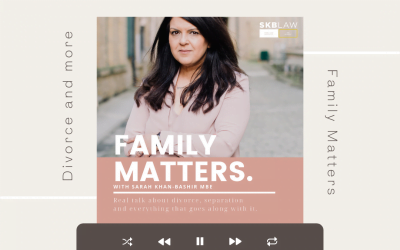The Court of Appeal (CoA) recently heard a case concerning a judge's decision to make a placement for adoption order for a younger child, while declining to order direct sibling contact with his older brother.
Background:
Care proceedings began in January 2023 for two brothers, R, aged 8, and S, aged 2, after S, then a few months old, was hospitalised with head injuries. In November 2023, the Judge found that the father had caused S's injuries and had beaten R. Both parents were consistently dishonest, concealing their ongoing physical contact. The Judge concluded that the boys' mother had been aware of the father's behaviour and yet had failed to protect her children. There was also a significant finding of failure to seek medical attention for S, extending from mid-November 2022 to mid-January 2023. As a consequence, S has a mild developmental delay from his head injury.
R was placed in foster care, while S remained with different foster carers. A June 2024 report recommended indirect contact between the siblings, with possible direct contact (twice yearly), contingent upon a risk assessment. S's contact with his parents was limited to an annual letterbox, while R maintained direct parental contact. Social workers prioritised finding adopters for S with challenging disabilities, noting that direct sibling contact, especially with a sibling who sees birth parents, often deters prospective adopters. The mother appealed.
Decision:
The CoA dismissed the appeal. The core of the Court's reasoning in this appeal revolves around the delicate balance between ensuring a child's permanent, lifelong welfare through adoption and the importance of maintaining sibling relationships, particularly at the placement for adoption stage.
The Court's overriding duty is the child's welfare throughout their life, as laid out in Section 1 of the Adoption and Children Act (ACA) 2002. This is the so-called "lodestar" provision. This includes considering the impact of ceasing to be a member of their original family and the importance of relationships with relatives.
The Judge notes the evolving concept of "open adoption," wherein the complete severance of ties with the birth family is "emphatically not true of many adoptions now". This challenges the Lower Court's potential implicit assumption that adoption necessarily severs all ties. Sir Andrew McFarlane P identifies a critical distinction in the existing caselaw between those where continuing direct sibling contact is necessary for the child’s future welfare, and cases where achieving an adoptive home is the overarching goal, with sibling contact being desirable, though not a prerequisite. For the Lower Court, S falls within the second category.
Sir Andrew McFarlane P noted that the shift in our understanding of post-adoption contact is driven by research and professional bodies, although he found it difficult to be reflected in Section 26 orders due to the "binary nature" of court orders versus the nuanced future. Crucially, the Judge noted that, while the professionals agreed contact was desirable, they unanimously advised against making a Section 26 order in this specific case, accepting that it would likely hinder S's placement due to his complex needs.
Implications:
This judgement firmly establishes a crucial distinction between whether direct sibling contact is "essential" to a child's welfare or merely "desirable". If contact is deemed essential (as in Re P and the Re R leading case), then the Court has a responsibility to make a Section 26 order, even if it creates challenges for finding adopters. If contact is deemed desirable but not essential (as found in S's case), the Court has discretion not to make a Section 26 order, particularly if such an order would genuinely impede finding an adoptive placement for a child with complex needs. The Court explicitly recognises that a court-ordered direct contact regime can have a "chilling effect" on the pool of prospective adopters. However, it also reiterates that this risk should not be the sole "determining factor in each and every case," particularly when contact is deemed "essential".
While not the direct reason for refusing the contact order, the extensive findings of parental dishonesty and the concern about "indirect links" between the parents and S (via R's ongoing contact with parents) were notable risk factors. This indicates that the Court will consider the integrity of the birth family's relationships and potential safeguarding risks when evaluating sibling contact, especially in cases where one sibling continues parental contact.


